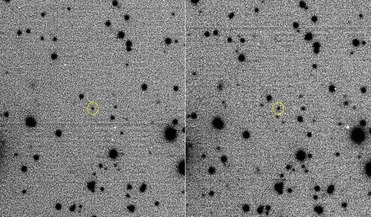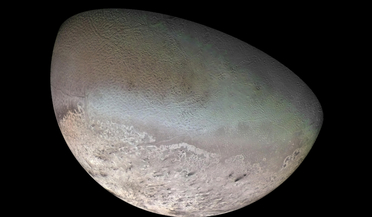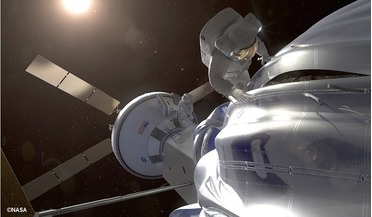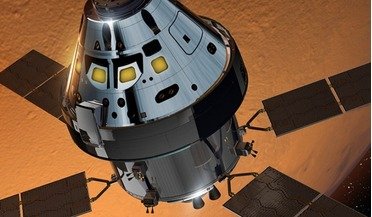 23 May 2018
First permanent extrasolar asteroid found near Jupiter
23 May 2018
First permanent extrasolar asteroid found near Jupiter
... same speed as the giant gas planet, but it does so in the opposite direction. This is called a retrograde orbit and although asteroids with retrograde orbits have been detected before, they are usually found only in the outer reaches of the...
 25 October 2021
NASA is targeting Feb 2022 for first Artemis launch
25 October 2021
NASA is targeting Feb 2022 for first Artemis launch
... the lunar surface. The spacecraft will then use the flyby to assist in inserting itself into a Distant Retrograde Orbit (DRO) trajectory around the Moon where it will stay for at least six days for a “short class...
 17 June 2020
NASA wants to visit Neptune’s weird moon Triton
17 June 2020
NASA wants to visit Neptune’s weird moon Triton
... lasting impression on planetary scientists who were left puzzled over Triton’s many unusual features. In addition to the retrograde orbit and icy plumes – a feature which on other moons is thought to be caused by water from the interior being forced...
 December 2014
Asteroid Redirect Mission: preparing for Mars in deep space
December 2014
Asteroid Redirect Mission: preparing for Mars in deep space
... (over 100-metre diameter). With either option, substantial asteroid mass will be delivered to a stable lunar distant retrograde orbit (DRO). SEP offers the advantage of very high-efficiency propulsion in which engines operate at very low thrust...
 January 2017
Mini space station for mice to study effects of reproduction in reduced gravity
January 2017
Mini space station for mice to study effects of reproduction in reduced gravity
... on the NASA Space Launch System (SLS) to a lunar distant retrograde orbit, a stable lunar orbit where the service module would place the spacecraft into the desired orbit. Once in orbit, a free-flying communications relay would separate from MICEHAB...
 January 2017
Blueprint for NASA’s journey to Mars
January 2017
Blueprint for NASA’s journey to Mars
...-lunar precursor mission architecture, this HEO may be a lunar distant retrograde orbit (L2 Halo Orbit) near rectilinear orbit, or simply a highly elliptical Earth orbit. A HEO orbit is chosen based on its relatively low departure delta velocity and...